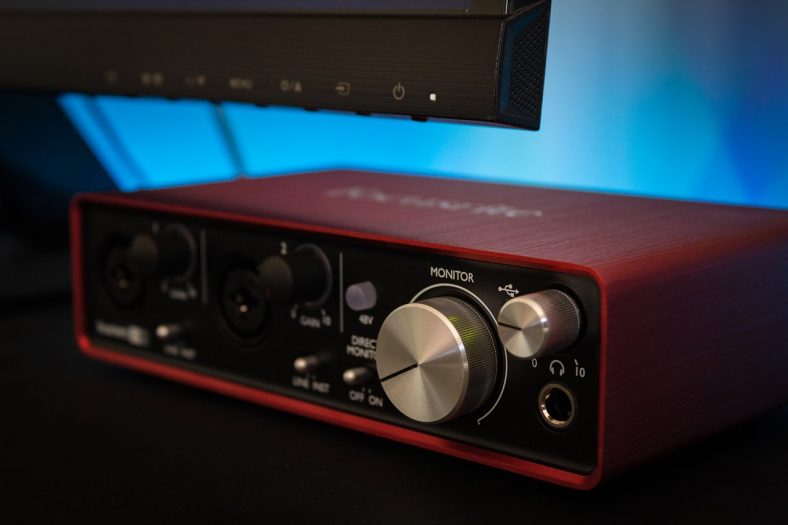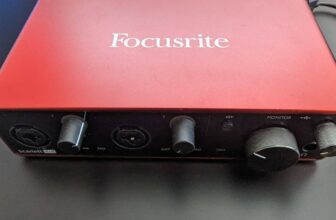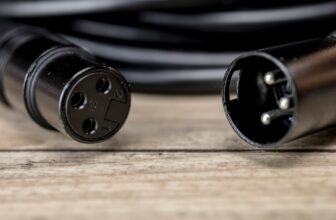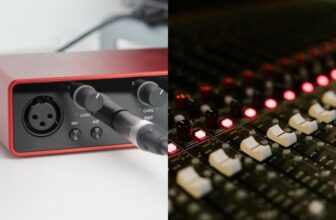Line In vs Mic In (Line Level Differences Explained)

Line-in is an audio socket with low gain capacity used to connect high-volume signals, while mic-in is an audio socket with high gain capacity used to connect low-volume signals. Line-ins are best suited for full mixes and loud signals, while mic-ins are designed for amplifying microphones.
Line-ins are typically stereo and connect line-level signals at around -10dBV. Line-level signals don’t require additional amplification. Mic-ins are normally mono and can amplify mic-level signals anywhere between -60dBV and -40dBV. Without proper amplification, mic-level signals tend to be too quiet. Knowing which input to use depends on the level of the recording signal.
Line-ins are characterized as having two sockets and requiring either an RCA or phone jack connector. Mic-ins only have one socket and require either an XLR or quarter-inch jack cable. Most commercially-available mixers, audio preamps, and audio interfaces feature both line and mic inputs.
Contents
What is mic-level?
A mic-level signal is a sound source with -40dBV or less caused by the voltage level that comes out of a microphone when someone speaks or sings into it.
Microphones record sound by converting pressure changes in the air into electrical currents in a wire. The electrical currents generated by a microphone are very subtle, and that’s why it’s necessary to use a mic preamp for recording vocals. In terms of voltage, a mic-level signal is approximately 1,000 times inferior to a line-level signal.
What is line-level?
A line-level signal is a sound source with up to 0dBV that requires minimal or no amplification. A mastered DJ mix is a good example of a line-level signal: since the sound source is already as loud as possible, adding gain to it is either unnecessary or ill-advised.
Line-level signals can be processed to great effect, but they’re already loud enough to be connected to a pair of speakers and play at a noticeable volume without the need for additional amplification.
What’s the difference between mic and line-level?
The difference between mic and line-level is that mic-level signals require a high degree of amplification, while line-level signals don’t. Mic-level is based on weak electric signals, generally produced by a microphone. Line-level is based on stronger signals that can be played at speaker level, such as DVD players, TV sets, and mixing consoles.
For recording, mic-ins should be used for connecting microphones, while line-ins should be used for connecting instruments. Some audio engineers make the distinction between instrument-level signals and line-level signals, but most instrument pickups can be properly recorded with minimal to no gain. The same applies to the vast majority of analog synthesizers and digital pianos.
Is line-level balanced or unbalanced?
Line-level is mostly associated with unbalanced audio, but many line-ins support balanced connections as well. It’s possible to distinguish between balanced and unbalanced audio by looking at the cables used for recording/replaying.
Unbalanced cables have two points of contact (such as TSR and jack cables), while balanced cables have three (such as XLR cables). Unbalanced connections use a positive and a negative conductor that also carries ground, whereas balanced connections use three conductors: a positive, a negative, and a ground. In both cases, ground conductors act as a shield that prevents radio frequencies and electromagnetic noises from entering the cable.
Does mic input or line-in have a stronger audio signal?
Line-ins have a stronger audio signal than mic inputs because they’re designed to be connected to line-level signals. Line-level signals are approximately 1,000 times stronger than mic-level signals (in voltage) and don’t require nearly as much gain. Mic-ins are hence best-suited for amplifying quiet sounds, offering much higher gain capacity than line-ins.
Classic vintage preamps such as AMS Neve 1073 have a gain knob for both their mic and line-ins, but their range is very different. Mic-ins can add up to +80db of gain, while line-ins are limited to +20db. In many cases, line-ins do not include a controllable gain knob and are designed to be connected to already-amplified signals.
Can I use mic input as line-in?
Line-level signals can be connected to the mic input, but tend to be very loud and distorted. Line-level signals often peak at 0dB, which means they do not require additional amplification. Connecting a line-level signal to the mic input can produce unwanted sound artifacts such as clipping, ringing, and crackling.
Do in-line mic preamps work?
In-line mic preamps are designed to provide an extra gain of about +20db to any sound source that’s being recorded or reproduced via a cable. Most in-line mic preamps are designed for microphones and live recordings, but these tools can also be used with great effect to add gain to instrument-level signals that require a subtle amount of pre-recording gain.
In-line mic preamps are an affordable alternative to traditional mic preamps, but they offer a comparatively limited amount of gain control. Due to their small size and relative endurance, they tend to be used in live music, whereas traditional preamps—which are heavy and somewhat fragile—are best suited to the studio.
Can I record vocals without a preamp?
It’s not possible to record audible, high-quality vocals without a preamp. This applies not only to music production, but to all kinds of audio-based recordings (including podcasts and voice-overs). However, it is not necessary to buy an expensive mic preamp to capture good-sounding vocals. All that’s required to do so is a mic-in.
Every mic-in is a preamp in its own way. External preamps are known for their high-quality sound and wide gain range, but they’re not a must-have piece of equipment. All that singers need to create high-quality vocals in the studio or at home is an audio interface.
What about USB microphones?
USB microphones may look like they’re the exception to the rule, as they work properly without the need for an external mic preamp or audio interface. However, they’re only audible because they already have an analog-to-digital converter inside them. For this reason, the sound-recording quality of USB microphones is not comparable to the quality of a regular XLR mic running through a mic-in.





